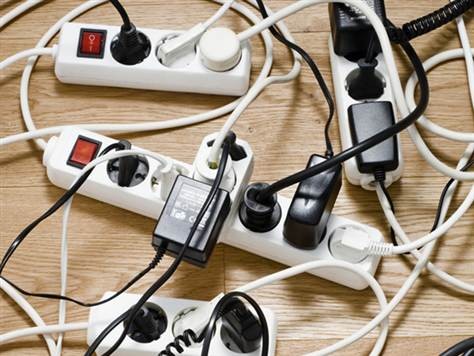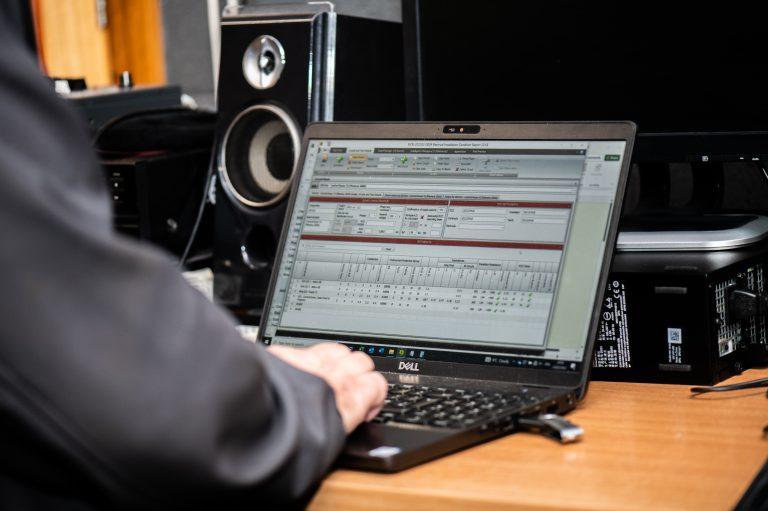We catch up with Senior Test Engineer and Thermographer, Ashley Boyce, about the real risks of daisy chaining.
In your day to day job, you may not stop to think how the power supply is getting from one place to another. And when you need to use an electrical appliance a long way from the socket, it might seem like your only option is to plug one extension lead into another.
So we catch up with Senior Test Engineer and Thermographer, Ashley Boyce, to find out about the real risks of ‘daisy chaining’. Ashley Boyce has worked in Operations and Thermography at Intersafe for over 14 years. He is out and about across the UK everyday at different client sites carrying out Portable Appliance Testing and Thermographc surveys, which use specialist heat detecting cameras to identify areas of over-heating not visible to the naked eye – so he is experienced in spotting dangers.
What is daisy chaining?
“Daisy chaining is the practice of plugging multiple extension leads together, or plugging many multi-socket adaptors into a single socket. However, unlike the charming childhood memories this term might provoke, daisy chaining poses a very acute danger.”
Why is this dangerous?
“When it comes to extension leads, current cannot exceed 13 amps and the problem comes when too many high current appliances (such as heaters, fans, kettles or portable AC units) are plugged into an extension cable. As the appliances attempt to draw continuously high levels of current, the mostly likely outcome is a fuse will blow. However, any issues with faulty fuses, adaptors which do not contain a fuse or poor-quality sockets with higher than usual resistance can easily result in a fire.
“This situation is made far more dangerous when extension leads are plugged into each other, otherwise known as ‘daisy chaining’. As the number of appliances that can be connected to a single power outlet increases, the likelihood of circuit overload also increases.”
He adds “Even when a fuse blows, there is a risk of fire if the unit is close to flammable materials or a risk of shock if it is touching water. The fuse is designed to protect the cable, not the user so it is essential that the cable has an earth. If the cable isn’t earthed then the risk is lethal if the appliance develops an insulation fault.”
What is best practice?
The IET code of practice for In-service Inspection and Testing of Electrical Equipment says the following when it comes to Multiway adaptors and RCD adaptors:
15.10.3 Multiway adaptors and RCD adaptors
Sufficient socket-outlets should be provided so that multiway adaptors are not necessary. Due to the increasing amount of computer and electronic equipment, this is not often achievable in offices, and some multiway adaptors may be necessary. The person inspecting the installation should decide what is reasonable in terms of safety, and report to the responsible person if excessive numbers of adaptors are in use. Such adaptors should not be ‘daisy-chained.’ New buildings should have sufficient socket-outlets so that multiway adaptors are not necessary. Adaptors fitted with an RCD should be checked and tested as in Section 15.10.2. Certain adaptors, often cube adaptors, are unfused, meaning that it is possible to overload the adaptor. This would result in a fire risk.
Portable Appliance Testing conducted by a suitably qualified person will ensure extension leads are safe to use. To arrange a safety inspection or enquire about any of our other electrical safety services, please call us on 02380 236200 or Make an Enquiry.
Book your electrical safety inspection Contact Intersafe




